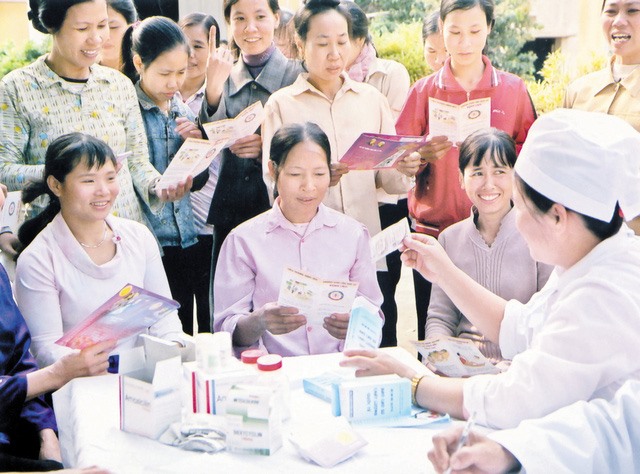 Society
Society

Việt Nam’s population sector faces numerous challenges, including different rates of fertility in different regions, severe gender imbalance, internal migration and population aging.
 |
| A medical worker delivers leaflets with information on reproductive health to women. Việt Nam’s population strategy by 2030 expected to resolve a number of population issues. — VNA/VNS Photo Dương Ngọc |
HÀ NỘI — Việt Nam’s population sector faces numerous challenges, including different rates of fertility in different regions, severe gender imbalance, internal migration and population aging.
Võ Thành Đông, deputy director of the General Office for Population and Family Planning under the Ministry of Health, made the statement at a conference held in Hà Nội on Thursday.
The conference, ‘Việt Nam Population Strategy by 2030’, aimed to collect ideas from concerned organisations to complete a draft strategy on population to submit to the Government.
The strategy for 2030 must overcome the problem of overcrowding in urban areas, bring the birth rate back to less than 109 boys/100 girls, integrate population issues into socio-economic development strategies and improve people’s health, said Đông.
At the conference, delegates agreed a new strategy was necessary because the strategy in 2011-20 did not resolve all problems in population and development.
The previous strategy mainly focused on supplying and improving quality of services, whereas to address population and development issues, the relationship between population and development is key.
Adapting to population aging had become a global problem and Việt Nam was one of the five countries with the fastest aging population in the world, said Đông.
With appropriate policy adjustments, the population strategy by 2030 would contribute significantly to the development of the country, he said.
Measures in the strategy include improving quality of pre-marriage consultancy and pre-born healthcare, expanding healthcare models for the elderly, ensuring equal population distribution and renewing education on population issues. — VNS




